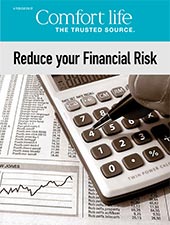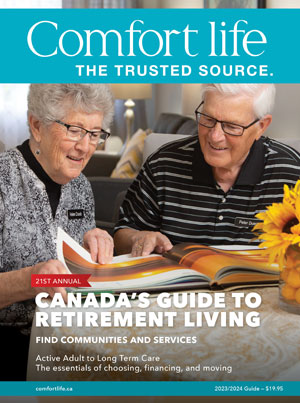How To Strategically Save After Age 65
If life is really a series of stages, it follows that the amount of money we need to save and how best to do it will change as we go along. Re-evaluating our money and savings strategies is particularly important as we age.
“As we start out working and raising families, we are accumulators,” says Chartered Accountant Kathy A. Kruivitsky, Portfolio Manager at Watson Di Primio Steel (WDS) Investment Management Ltd. in Ottawa. “Retirement is our non-working decumulator phase. As we grow older, it’s important that our savings and money-management plans keep pace and still give us a lifestyle we can enjoy.”
Here are Ms. Kruivitsky’s top seven tips for shifting your savings targets to match your changing needs and lifestyle as you enter your “zoomer” years.
Step up and look ahead – Give yourself at least a five-year run-up. Many of the benefits and sources of income you’ll be depending on after age 65 are taxed. And while the Canada Pension Plan (CPP) payments you’ve earned are yours to keep, Old Age Security (OAS) can be clawed-back if your annual income is more than about $67,000. Plan to smooth out your retirement income, so you’re not stuck with a huge tax bill in a few years.
Share to spare taxes – “For most seniors, the best savings strategies are based on reducing taxes,” Ms. Kruivitsky says. Changes in the tax rules in the last several years mean couples have new opportunities to equalize retirement income. When you file your tax return, you can elect to split up to 50 per cent of your eligible pension income with your spouse – a strategy that can reduce income taxes. Seniors can also elect to receive CPP with a spouse in equal amounts too.
Make room for a TFSA – “Tax Free Savings Accounts are the best thing that’s happened to saving money in Canada in the last 35 years,” says Ms. Kruivitsky. Helping people to save, especially for retirement, was the whole point of TFSAs in the first place, she explains. Most seniors should be taking advantage of their unlimited potential, but using them to their best advantage among your diversified “savings pools” can be tricky. Be sure to consult your own Chartered Accountant or investment advisor about your particular situation.
Diversification is even more important in retirement – Life and its expenses are not evenly distributed. Expenditures are often “lumpy”, and we can forget to budget for new cars, exotic trips or pricey home repairs. “Seniors are income-tested,” Kruivitsky says, “and they need to be able to tap into some investments without pushing themselves into a higher tax bracket.” Consult a professional to see if you can get at your cash when you need it without being unnecessarily disadvantaged at tax time.
Your mortgage is a forced savings plan – “It’s best to own your ‘empty nest’ by retirement-time,” Ms. Kruivitsky says. “When we retire, our basic lifestyle doesn’t change that much. We usually stay in the same house, have the same friends and do much the same things.” If anything, she says, our costs can ratchet-up a bit at first, as many still-healthy retirees like to travel. What should naturally go down is our rate of savings for mortgage payments, kids’ expenses – at home or school – and RRSP contributions.
Consider an early RRSP draw-down – Around age 65, revisit your tax-deferred RRSPs, Ms. Kruivitsky recommends. “You will know what your various pensions will contribute and have a good idea of your spending needs.” So think about “averaging” your income forward. The conventional wisdom of leaving RRSPs untouched until age 71 may hurt you, as that strategy can lead to both higher tax rates and loss of OAS. By converting some of your RRSP to a RRIF at 65, you create opportunities for pension-splitting with your spouse and can access the $2,000 pension-income tax credit, too.
Bridge the knowledge gap – Experts who deal with different people in different circumstances see things about our situation that we don’t. “With the right information, most people make good choices and do the right thing,” Ms. Kruivitsky says. The greatest gap is in the information, when advisors make things seem so complex, you just want to give up. Don’t give in. Ask questions until you get answers that make sense to you. “Learn what you need to know,” Ms. Kruivitsky says, “and you’ll be able to protect your savings for as long as you need them.”


